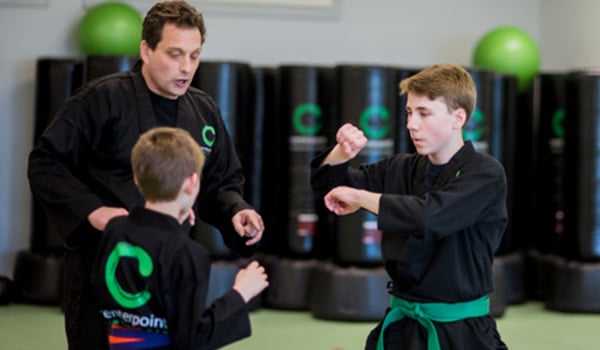[The Four “P’s” of Teaching] Part Two: Pull
By CPMAstudio In InsightI had a college professor who was famous for their grading strategy. They gave no assignments at all during the semester. At the final, you were handed a stack of blue composition notebooks and given a simple question that ended with the phrase, “Please Discuss.” There was no time limit. How you handled that one question determined the whole grade. It may sound unfair or harsh, but in fact, it was anything but. Our professor was a master of this style of teaching, known as “Pull.”

Pull inspires and guides students to express what they are learning and make it their own. It’s about much more than memorizing and reproducing information. Because it is focused on comprehension and connecting to the knowledge, it demands energy and commitment from the teacher and student.
For example, my “one test” professor employed the Socratic Method; they built every class around lively debate and rapid-fire question-and-answer sessions. There was nowhere to hide, everyone who attended the class knew they were going to be called on. Our professor was very good at asking hard questions that kept you thinking well after you left class. They also knew how to ask each of us the very question we needed. Of course, you could ask the professor questions as well, and you were always welcome to try and “stump the professor,” by asking tough questions or pursuing a certain line of reasoning. Since the professor was actively engaged in their subject, it was tough to get them off-balance, but it was a lot of fun to try.
My “one test” professor also provided a lot of office hours (a bit of a rarity on campus at that time), so anyone confused or concerned had plenty of opportunities to stop in and get some extra help. Anyone who was paying attention arrived at the final exam prepared and ready. I got an “HH” or “High Honors” on the exam, the equivalent of an “A” at the time. More importantly, I learned a lot about how to learn, I was a much more self-directed student after that class, and my grades improved markedly.
Pull is a big part of teaching Karate to children, and we apply methods that are not that different than what I experienced in college. All of our kids know they have to learn each stripe by heart, and that we test every two weeks. To get the stripe, you have to do the techniques correctly without any assistance. While we drill the class in each stripe, and “push” the information out to them (see my last blog post), we work hard to create as many opportunities as possible for them to remember and execute the skills on their own. Every class requires them to “practice like a Black Belt,” which means they have to work out by themselves, even if only for a minute or two. Students practice with a partner, with the group, in obstacle courses and as part of any number of martial arts based games and drills. We’re always coming up with new drills, new activities and new ways of “pulling the skills” from each student, so they can see for themselves how much they can accomplish. We show up prepared and engaged, every class. We also offer extra instructional time before and after classes and during three review months each year. It is amazing how hard-working and self-directed kids can be under these conditions. They understand what’s expected of them and how to meet the standard.
We also use Pull to guide other kinds of behavior in the studio, particularly manners and respect. When a child makes a mistake or behaves improperly, we ask them if what they did was correct, and then ask them what they should do differently next time. Kids are smart and know the answers to these types of questions. Guiding them to state the correct answer for themselves is very powerful. It also gives us an opportunity to find out if there is anything we can do to help make it easier for them to succeed the next time. It takes a little more time than saying “stop that” or “sit down,” but it makes for a more positive and resilient culture in the long run.
Looking forward to next week when we talk about Process. See you then!
— Andy



